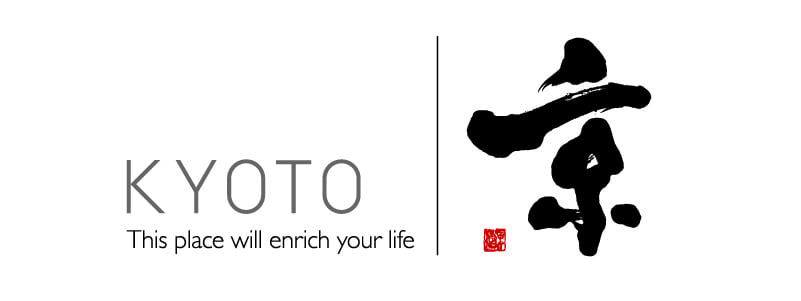Term archive
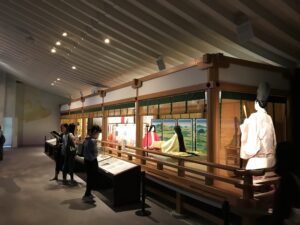
投稿タイプ:sightseeing
The Tale of Genji Museum,Uji City
Known as a masterpiece in classical Japanese literature, "The Tale of Genji" tells the story of an extremely handsome nobleman and his love affairs in Heian period (794-1185), and the final 10 chapters take place in Uji City. This museum presents explanations, movies, and interactive games available in English, making it a lot of fun to experience the glamorous world of Genji.
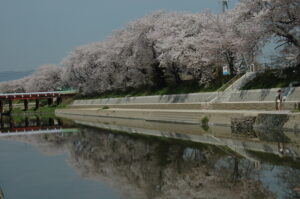
投稿タイプ:sightseeing
Cherry Blossoms Along the Maekawa Embankment
The Maekawa Embankment in Higashi-imoarai is famous for its cherry blossoms, mainly of the Yoshino cherry variety. The cherry trees reach full bloom during the period from the end of March to early April all around the embankment. The cherry blossoms lit up by paper lanterns at night is also beautiful.
This location has been selected as one of the 200 selected Natural Treasures of Kyoto.
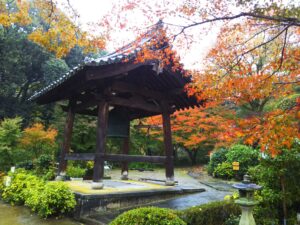
投稿タイプ:sightseeing
Jinno-ji Temple
This temple was established by the monk Gyokyo, who is said to have transferred a spirit seperated from Iwashimizu Hachimangu Shrine to this temple. Visitors can enjoy brilliant autumn leaves along the approach to the temple grounds. The gingko trees are also gorgeous.
*Reservations are required for entrance to the Main Hall.
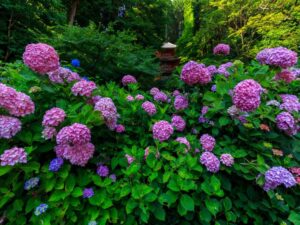
投稿タイプ:sightseeing
Gansen-ji Temple
Gansen-ji Temple is an ancient Buddhist temple located in Kamo-cho, part of Kizugawa City in the southernmost part of Kyoto Prefecture. Thought to have been built in 729, the name "Gansen-ji" translates literally to "Rock Boat Temple" and near the entrance of the temple’s main gate is a boat-shaped rock, where legend has it that priests used the rock for sacred cleansing rituals. Nestled in the pristine nature of Kyoto's tea producing region, the three-storied pagoda on the temple grounds is a designated Important Cultural Property and the main hall maintains an ancient yet elegant charm. Gansen-ji Temple is famous for its displays of bright hydrangeas, water lillies, and crape myrtle flowers in the summer. Gansen-ji is truly a sight to see in any of the four seasons, though, with Japanese plum and cherry blossom trees blooming in the spring, autumn foliage, and camelias in the winter.
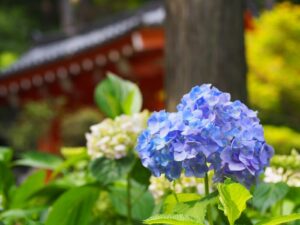
投稿タイプ:sightseeing
Mimuroto-ji Temple
Mimuroto-ji Temple is known for its spectacular gardens, and it is sometimes called the "Temple of Flowers." Mimuroto-ji is located in Uji City, part of Kyoto's tea-producing region in the south of Kyoto Prefecture. From late April to early May, you can find a sea of some 20,000 azaleas—one of the best displays in the Kansai region—and wander through the garden paths to surround yourself with the flowers. Opposite the azalea gardens are approximately 10,000 hydrangeas that begin to blossom in June, surrounding visitors with magnificent shades of pinks and blues. Finally, as you get closer to temple's main hall, you'll find a huge display of lotus flowers which bloom in all shades of pink and white from late June to early August. Make the most of the flowers by taking a rest at the tea house inside the temple grounds. Take in the pond and dry rock gardens, and of course the Buddhist statues, which are designated Important Cultural Assets.
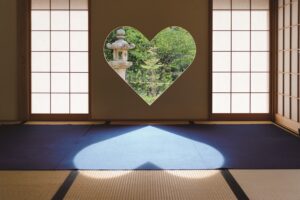
投稿タイプ:sightseeing
Shoju-in Temple
Located in Ujitawara in Kyoto, Shoju-in Temple was built around 800 years ago, and belongs to the Koyasan Shingonshu sect of Buddhism. According to records, during the Sengoku (1467-1615) and Edo periods (1603-1868) Shoju-in Temple caught fire twice, and was rebuilt in 1596 by the monk Yuin.
The temple's principal image, an eleven-faced Kannon statue, is a designated local cultural property, and is shown to the public only once every 50 years. Apart from the Kannon statue, there is a sitting statue of the Buddhist minor deity Acala made by Kaikei, one of the Kamakura period's (1192-1333) representative Japanese sculptors of Buddhist statues. This image is also an Important Cultural Property.
There are over 2,000 wind chimes in the temple in the summer, and every year there is a Wind Chime Festival from July 1st to September 18th. In the side hall there is a heart-shaped window from which the pink cherry blossoms, the green grass of summer, the red autumn leaves, and the white snow of winter can be seen.
The heart shape is a traditional pattern used in Japan for fortunes and blessings, so this window is known as the "Window of Happiness," and always attracts many visitors. On the ceilings of the side hall there are 160 different pictures of flowers and Japanese scenery, which creates some beautiful scenery overhead. Shoju-in Temple also offers activities such as bracelet-beading, sutra-writing, Buddha-sketching, and yoga classes (reservations required).
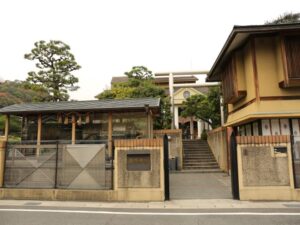
投稿タイプ:sightseeing
Hiko Shrine
Yawata City's Hiko Shrine was built by aviation pioneer Chuhachi Ninomiya in 1915, on land where he resided. Ninomiya designed the first aircraft model (the Karasu-gata aircraft model) in Japan. Hiko Shrine (“Hiko” meaning ”flight” in Japanese) is dedicated to both the deity of the sky, Nigihayahi, and to plane crash victims around the world. People usually come to pray for aviation safety and career success.
Inside the grounds, there are displays of fighter aircraft parts, and the shrine has a museum exhibiting the historical data gathered by Ninomiya Chuhachi or donated by companies. (An extra fee is required for the museum)
Nowadays, people in the field of aviation, like pilots and cabin attendants, come from all over the world to visit the shrine. Students hoping to get jobs in the aviation field are also known to pay visits!
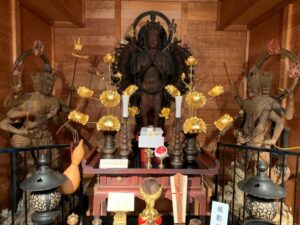
投稿タイプ:sightseeing
Juho-ji Temple
Thought to have been established in 704, Juho-ji Temple is situated in Kyotanabe City. In the main shrine stands the statue of Juho-ji Temple's principal deity, the Thousand-Armed Bodhisattva Kannon, which is designated as an Important Cultural Property. Along with the statues in Osaka's Fujii-dera Temple and Nara's Toshodai-ji, the 180 cm tall wooden statue is one of the three masterpiece Thousand-Armed Kannon statues in Japan that actually have one thousand hands. On each of the hands is a charcoal drawn eye that has mostly faded with time. What's especially unique about the Kannon Bodhisattva statue in Juho-ji is that the face of the statue changes according to the lighting. During the day, the statue has more solemn and stately features, while in the soft lighting of dusk, it has gentler features. Prior reservation is required to see the Thousand-Armed Kannon statue (Tel: 0774-65-3422). Please inform us of the date of your visit and the number of people coming. As a rule, on rainy days or days of high humidity, statue-viewing will not be available.
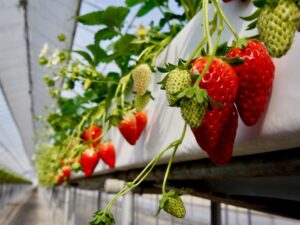
投稿タイプ:sightseeing
Hanayagi Farm
Opened in 2003 in the south of Kyoto Prefecture, Hanayagi Farm is a place where you can pick your own strawberries and edamame (young soy beans). From winter to spring you can enjoy picking and eating your own freshly-picked, sweet and juicy strawberries where it's possible to eat as much as you like for 40 minutes. In the spacious greenhouses, the "Akihime" and "Benihoppe" strawberry varieties grow in beautiful clusters. The garden beds are elevated, which means you can pick the strawberries without having to bend down, and the rows are well-spaced so that those with baby strollers and wheelchairs can also access the area and participate with ease. Hanayagi Farm also makes a strawberry sorbet and strawberry gelato sold onsite using the fresh strawberries from the farm. From mid-late October, you can also experience picking your own edamame. In this part of Kyoto Prefecture, the Chubu Tamba region, you can also find the famous "Shintambaguro" variety of black soy bean, which is also available to buy at roadside produce stalls. All harvesting activities require advanced bookings, which can be made either by phone or website.
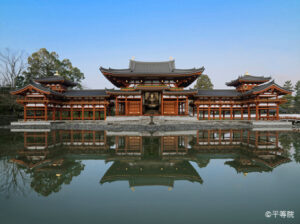
投稿タイプ:sightseeing
Byodo-in Temple
Byodo-in Temple, which shows the historical glory of the Fujiwara clan, was once a villa on the west bank of the Uji-gawa River. It belonged to Minamoto no Toru but was given to Fujiwara no Michinaga. His son, Yorimichi, converted it into a temple. The Houou-do (Phoenix Hall, a National Treasure), which is surrounded by the Aji-ike pond, demonstrates elements of the gardens of the Heian period (794-1185). The influence of the Heian aristocracy, who dreamt of entering the Pure Land of Amida Buddha, can be seen in the building. Byodo-in Temple is depicted on the 10-yen coin and is a familiar sight in Japan.
Meanwhile, the Byodo-in Museum Hoshokan exhibits precious items owned by the temple, such as the National Treasures of a Gilt Bronze Phoenix, "Unchu Kuyo Bosatsu" (Buddhist saints holding a mass in the clouds), and Bonshou (temple bells). Reproductions that made with computer graphics utilizing state-of-the-art digital technology can also be enjoyed in the museum.
